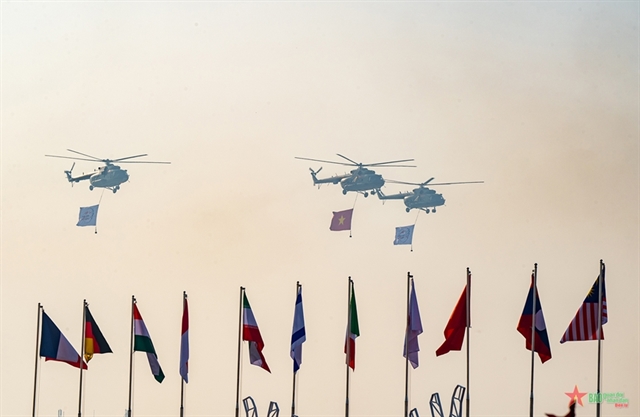

Just before July 27, Việt Nam’s tourism sector was on its way to an impressive recovery relative to the rest of the world; thanks to the summer holidays, top tourist hotspots were packed with local travellers looking to enjoy the sun, bolstered by promotions launched to boost domestic tourism as borders were likely to be closed for at least another quarter.

|
| The performance of city hotels, especially in the economic centre of HCM City and the old quarter of Hà Nội, suffered the most with the absence of inbound foreign travellers. — Photo courtesy of Indochina Capital |
Insights from Indochina Capital consultants
Just before July 27, Việt Nam’s tourism sector was on its way to an impressive recovery relative to the rest of the world; thanks to the summer holidays, top tourist hotspots were packed with local travellers looking to enjoy the sun, bolstered by promotions launched to boost domestic tourism as borders were likely to be closed for at least another quarter.
Flight routes approached 80 per cent traffic capacity during Tết, the busiest time of the year. According to the Việt Nam National Association of Tourism (VNAT), in June, many provinces recorded an increase of 1.5-3 times the number of arrivals of May, whereby Sa Pa recorded an increase of 2.65 times, Quảng Ninh 3.23 times, Quy Nhơn 2.8 times and Phú Yên 1.5 times. VNAT also estimates more than 31 million domestic arrivals for the first seven months of 2020, with 8 million corresponding to July alone – more than a quarter of travel for the entire year in just one month.
All of this momentum came to an abrupt halt the weekend of July 26, reverting the COVID-19 sentiment to panic and freezing Việt Nam’s economy as a whole and tourism in particular once again. Within two days, 31,000 guests from HCM City cancelled their bookings; an estimated 70-80 per cent of tour groups scheduled for the end of July and beginning of August travels from Hà Nội cancelled, and although most cancellations involved Đà Nẵng, a ripple effect was seen as tours to Phú Quốc, Đà Lạt and Nha Trang were affected as well. VNAT expressed concerns that many travel and accommodation companies would not be able to recover from the second wave of COVID-19 as losses exceeded predictions after six months.
The performance of city hotels, especially in the economic centre of HCM City and the old quarter of Hà Nội, suffered the most with the absence of inbound foreign travellers. Minimising losses by cutting expenses, rotating personnel, focusing on food and beverage (F&B) services and staycation packages were a number of measures employed to help generate revenue, but have barely been enough to cover the high operational costs.
Instead of focusing on costs and staff rotations, owners need to consider a structural shift. Some examples include retaining quality personnel while ensuring adaptability and flexibility, streamlining operational processes for greater efficiency, refining product offerings, filtering and localising supply chains, and providing cross-training to personnel to add new capabilities such as delivery and takeout for F&B services while maintaining new health and safety standards and protocols. Cash flow models should be updated weekly or bi-weekly with actual against budget comparisons.
More importantly, the pandemic creates an environment where close collaboration and co-operation between tourism stakeholders is essential for lasting success. We now live in a world where outbreaks will become increasingly frequent and we must accept the realities of a post-COVID world. The decades-old traditional hotel model is a thing of the past and owners and operators who adapt the quickest will reap the benefits in the long-term.
At a local level, hotels should work closely with F&B, travel and transport companies to overcome booking cancellations and generate more commercial opportunities behind creative solutions that go beyond a hotel’s core services. Strategic partnerships involving comprehensive packages with improved flexibility on duration of redemption and leisure activities unique to the location of each hotel can help all parties avoid cancellations and boost consumption by giving customers the sense of control and an opportunity to rediscover their home city. The collaboration can also work together to exchange market research and put together campaigns to understand customers’ behavioural changes to grasp what consumers are looking for as the pandemic evolves.
Regionally, hoteliers can rally owners, developers, consultants, government agencies and authorities to create private-public taskforces for the modernisation and strategic positioning of recovery mechanisms, working together to ensure every company is uniquely positioned to capture growth opportunities and is co-ordinating to overcome the crisis – as partners rather than competitors.
Information sharing is crucial to all stakeholders, especially owners and developers, as thorough understanding of operational readiness against crises will help as parties build operational protocols for the future. Local developers should seek international consultants and hotel management experts for comprehensive and specific solutions, from eliminating risks of contamination through common water and ventilation systems, limiting the touching of shared surfaces such as doorknobs, light switches, to forecasting demand and optimising opening dates at the expense of development.
Hospitality stakeholders need to co-ordinate multiple taskforce management teams to facilitate quick assessment and decision-making that will ensure hotels are strategically positioned to perform during and post-pandemic. While it's understandable that most players will initially be apprehensive in sharing information and co-operating with different stakeholders (and supposed competitors), we must take the long-term view and contribute to building resilience and ensure the continuity of the hospitality business.









